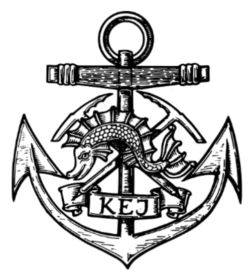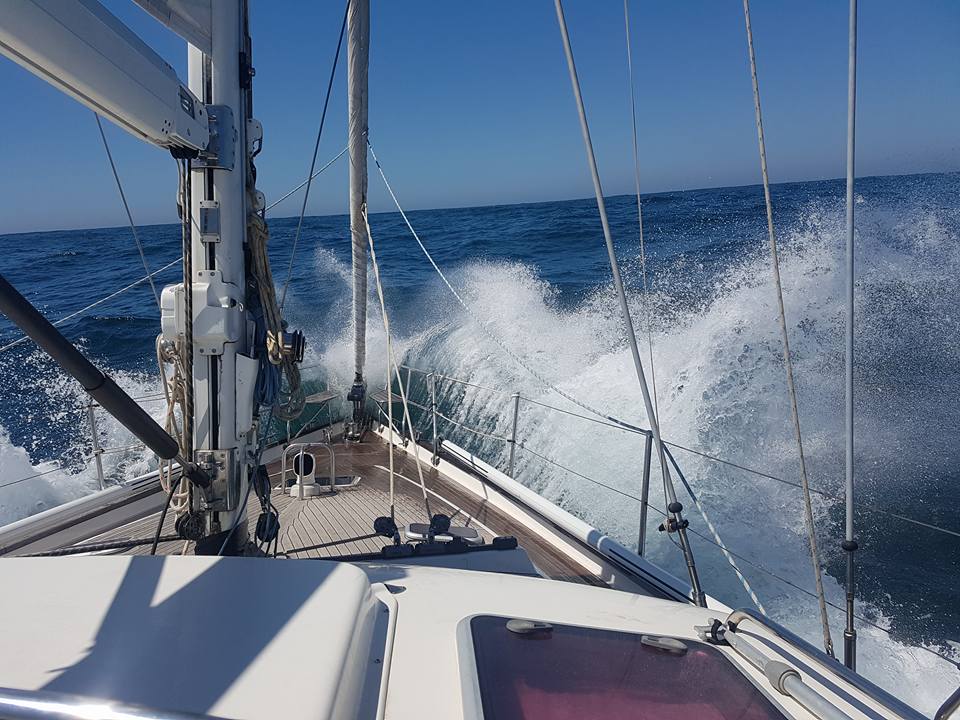In May, you may have seen my social media feeds filled with macaques, naval history and yacht photo’s… Whilst everyone assumed this trip was for work, and yes I do work for a yacht charter firm, it was actually to help my brother out on a yacht delivery as crew had let him down. Any excuse to get on the water, eh?!
Weeks before, my brother joined the yacht in Corfu and sailed her to Sardinia with the owner, where my mum hopped on and took over as crew before then heading on to Almeria and then Gibraltar to pick up yours truly. Whilst I waited for them, I made the most of the 2 days I ended up being in Gibraltar and headed to The Rock and also on a mini naval history tour.
The yacht we were delivering was a custom Discovery 55, and she was absolutely beautiful to sail, and a pleasure to be onboard. We were on a 2 on 4 off watch routine for the entirety of our trip, and it was pretty uneventful. A few lobster pots bobbed by, some dolphin pods came to play and the wind was on our nose almost the entirety of the trip. As Horatio Nelson famously said, “I cannot command winds and weather”.

From Gibraltar we headed out of the Strait, past Tarifa, the southernmost point of continental Europe.


After Tarifa we rounded the coast and passed Cape Trafalgar.
On the 21st of October 1805, the British fleet, under Horatio Nelson’s command, met the combined French and Spanish fleets, under French Admiral Pierre-Charles Villeneuve, off Cape Trafalgar, for one of the most famous naval battles in history. If you want to read more about The Battle of Trafalgar, you can do so here, but I’ll keep this post brief as it’s not the main focus, though you’d not know it from the amount of photo’s I took…
Despite this ‘great and glorious victory‘ at Trafalgar the Napoleonic Wars continued for another 10 years, but the defeat of the French and Spanish fleets meant that they could no longer seriously come up against the British in battle at sea.


We plotted in the lat/long of HMS Victory at noon on the 21st October 1805, as we headed out across the Bay of Cadiz towards Lagos overnight, in order to find some gas.

We arrived in Lagos at around 11am and it transpired this was the fastest pit stop ever, as they had none… We re-evaluated, realised we probably had just enough and were back to sea!

After a couple of hours, still nose into wind, we reached Sagres Point.
For thousands of years it was believed that this was the end of the world – that the sea stretched away and sea monsters lived out of sight, just beyond the horizon, before the earth dropped off into a terrible black hole…
Sagres sits at the very south western tip of Portugal, just around from Cape St Vincent.

As soon as we rounded Sagres Point the Atlantic swell began to pick up and things got a little bouncier on board.

We carried on to Cape St. Vincent, famous once more for its naval history.

At dawn on the 14th of February 1797, the British and Spanish fleets, commanded by Jervis and Admiral Don José de Córdoba y Ramos, caught sight of each other off Cape St. Vincent. 15 Royal Navy ships took on 27 ships of the Spanish fleet and won.
Again, I wrote a post on this, if you want to read it, here.
After the battle, Nelson became a naval hero, was knighted and promoted to Rear Admiral of the Blue. Jervis was given the title of Earl St. Vincent. Cordoba was dismissed from the Spanish navy. The next year Jervis once more sent a squadron under Nelson to the Mediterranean and the rest, as they say, is history!
After Cape St Vincent we headed further offshore to lessen the effects of the swell on the boat and were treated to some beautiful seas and even some visitors, which more than made up for my lack of sleep at this point!



The next day, due to the weather, we were forced to head a little further inshore, as Force 8 winds were predicted, and we we woke to slightly gloomier seas and skies, but did come across a yacht from Sweden, also struggling with the lack of wind…
Motoring is not as fun as getting your lean on!

The grey skies didn’t last for too long, though, and a few hours later the sun was back and we had more visitors…

We carried on parallel to the coast of Portugal and then Spain over the next few days, past Cape Finisterre and its famous lighthouse. In Roman times they believed it to be the end of the known world, similar to that of Sagres Point.
The name Finisterre, like that of Finistère in France, derives from the Latin finis terrae, meaning ‘end of the earth’.
The shoreline is directly exposed to the power of the Atlantic Ocean. So, when storms and Atlantic swells from 2500m meet the shallow 150m waters of Galicia, the sea state worsens. This is why it’s known as the legendary ‘Costa da Morte’ or the ‘Coast of Death’.

We rounded Cape Finisterre overnight and arrived at A Coruña around midday, heading straight for the marina bar, of course, where I stood rocking back and forth, realising my land legs weren’t quite back yet…
Apparently there was a royal wedding on, so we felt it best to celebrate on their behalf.


Now, whilst it looks all jolly dolphins and sunsets, we were of course working. Living in a constant state of 2 hours on watch 4 hours off messes with your sleep patterns spectacularly, and you need to try and grab rest whenever you can, which is easier said than done on lumpy seas.
As any of my fellow sailors know, just trying to get in and out of bed becomes a challenge, let alone trying to put your salopettes back on whilst you rock around.
Cooking? Well, the stove is on a gimble, so it’s never too bad, but moving round the kitchen or trying to make a cup of tea involves permanently wedging yourself in place.

We were only out for 5 days, but on longer voyages it certainly becomes a struggle. Especially if, like me, you fail to sleep when it’s light.
Top tip? Take an eye mask.

Sailing is certainly not for everyone (though it should be), but if you want a life on the ocean wave, there are so many ways to get out on the water!
I adore sailing, and after being on the water since I was 15 can’t imagine a life where I’m not on or near the sea, even if only on annual leave and at weekends.
750nm later and it’s time to count down to the next trip….

